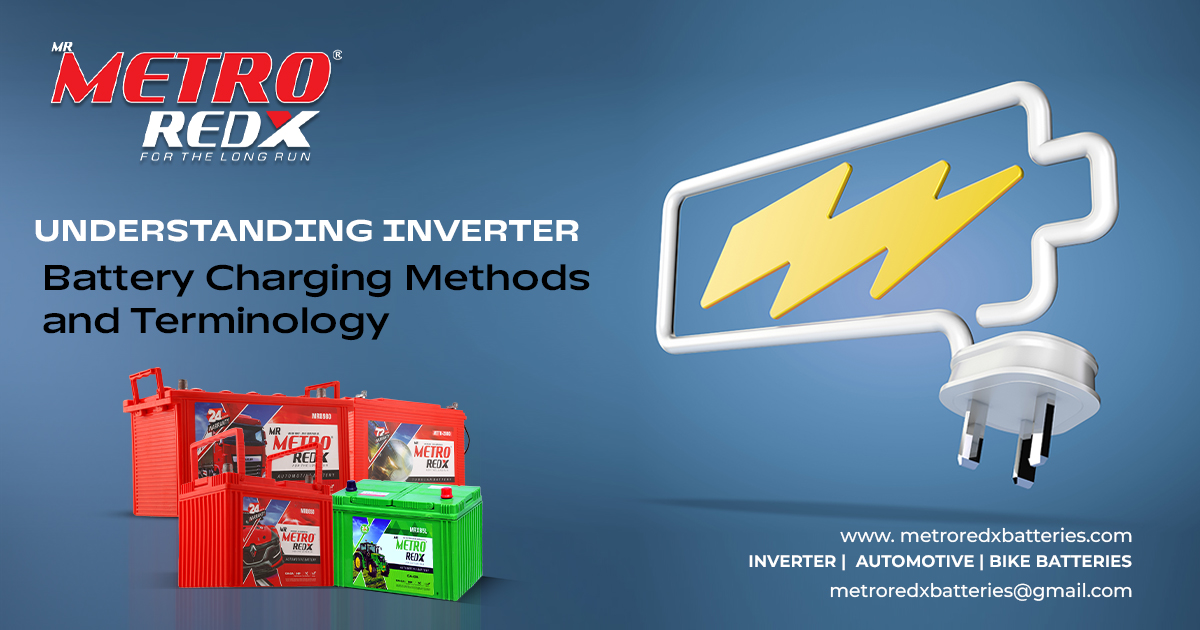As a reliable inverter battery manufacturer and supplier in India, Metro Redx is committed to providing high-quality products that meet the diverse needs of consumers. One crucial aspect of inverter battery technology is the charging method and the associated terminology. In this article, we’ll delve into the intricacies of inverter battery charging, shedding light on key terms and processes.
Charging Methods:
- Constant Voltage Charging: In this method, the battery is charged at a constant voltage, typically higher than its nominal voltage. As the battery charges, the current gradually decreases until it reaches a preset threshold, indicating full charge. This method is commonly used for lead-acid batteries and ensures a relatively fast and efficient charging process.
- Float Charging: Float charging involves maintaining the battery at a constant voltage, usually slightly lower than its nominal voltage. This method is employed once the battery reaches full charge to prevent overcharging while keeping it ready for immediate use. It is particularly beneficial for standby applications, such as backup power systems.
- Pulse Charging: Pulse charging, also known as desulfation charging, utilizes short, high-energy pulses to break down sulfate crystals that may have formed on the battery plates. This method helps rejuvenate sulfated batteries, improving their performance and extending their lifespan.
Key Terminology:
- Voltage (V): Voltage refers to the electrical potential difference between two points in a circuit, typically measured in volts (V). It plays a crucial role in determining the charging characteristics of a battery.
- Current (I): Current is the flow of electric charge through a conductor and is measured in amperes (A). It determines the rate at which a battery is charged or discharged.
- Capacity (Ah): Capacity denotes the amount of charge a battery can store and deliver over a specific period, typically measured in ampere-hours (Ah). It is an essential parameter for determining the runtime of an inverter system. Inverter battery manufacturers always focus on engineering to improve the capacity of their battery, it can act as the Unique Selling Point (USP) of their battery.
- State of Charge (SoC): SoC indicates the remaining charge in a battery relative to its full capacity, usually expressed as a percentage. Monitoring SoC is crucial for ensuring optimal performance and longevity of the battery.
Metro Redx Commitment:
At Metro Redx, we prioritize innovation and quality in our inverter battery manufacturing process. Our state-of-the-art facilities and stringent quality control measures ensure that each battery meets the highest standards of performance and reliability. Whether you’re looking for lead-acid or lithium-ion batteries, we have a comprehensive range of products to suit your requirements.
Conclusion:
Understanding inverter battery charging methods and terminology is essential for maximizing the performance and longevity of your battery systems. As a trusted inverter battery manufacturer and supplier in India, Metro Redx remains dedicated to providing customers with superior products and comprehensive support services. With our expertise and commitment to excellence, you can trust Metro Redx to power your world reliably and efficiently.
Contact Metro Redx today to learn more about our inverter battery solutions and take your power backup systems to the next level.
Visit our website or contact us today to explore our range of high-quality inverter batteries and experience unmatched performance and reliability!

